Faced with the mounting impacts of the climate crisis, organizations are increasingly recognizing the need for powerful networks and collaborative efforts that advance progress on ambitious environmental, social, and governance (ESG) goals and help meet new disclosure requirements.
While ESG efforts continue to gain momentum, the problems created by the triple planetary crisis of climate change, biodiversity loss, and pollution are beyond the scope of any one organization to solve. The impacts from these crises, which often fall disproportionately upon underserved communities who are least able to prepare for or recover, are rapidly increasing. How leaders take action to effect meaningful change in advancing ESG goals that directly address these threats is crucial.
Leaders must be prepared to work within and beyond their own organizations and focus on capacity building to prepare for the challenges ahead.
A collaborative approach may be the only way to meet and exceed global sustainability goals. Developing the right skill sets in the leaders at the forefront of ESG initiatives can ensure individual contributions are as impactful as possible.
In this blog post, we’ll explore:
- The benefits of collaboration in ESG
- Internal collaboration within organizations
- External and business-led collaborations
- Preparing for a sustainable future with upskilling
- Key competencies to help flag skill gaps and opportunities in your organization
Benefits of effective collaboration in ESG
Collaboration holds the potential to not only help us meet necessary standards but to create a thriving, sustainable global community. There is a growing recognition of the impact made when resources and expertise are pooled toward shared goals.
For example, the RMA’s Climate Risk Consortia, which brings together risk management professionals from over thirty financial institutions worldwide to address threats related to climate change, is a powerful example of what can be achieved by strategic collaboration and partnerships.
Yet for many organizations sustainability targets can be massive and far-reaching, making the ESG landscape both broad and complex. However, when individuals and organizations collaborate, they can drive much more significant progress than when acting alone.
Some of these benefits include:
- Increased capacity and access to resources like time and capital
- Accelerated development of solutions
- Improved corporate reputation
- Shared access to data and research
- Advanced technological innovations
- Greater efficiencies that save both money and time
- Increased resiliency across companies and industries
- Shared risk that reduces exposure for each organization
- Meaningful discussions regarding complex ESG standards
From this perspective, it’s clear that internal collaboration and strategic external partnerships are not just effective pathways to achieving ESG goals, but necessary ones. The urgency of sustainability challenges demands that companies, industries, and governments combine their best efforts to ensure continued progress against these targets.
What will effective collaboration entail?
Companies working towards a low-carbon, socially-inclusive economy can look for internal and external collaboration opportunities. It’s important to engage key stakeholders and identify transition pathways so that collaboration can be strategic, aligned, and drive real, systemic change in sustainability.
Assessing the best way to participate or partner is also essential. Only you can decide where your organization has the most expertise or valuable resources to lend and focus contributions in these areas. Capacity building within your organization first will ensure your team has the right skill sets and is well-equipped for the challenges ahead.
Sarah Volkman and Rebecca O’Neill of The Sustainability Institute highlight that ‘the urgency of our collective challenges means that we must accelerate action by helping each other’.
Nurturing collaborative networks of peers can help practitioners learn from the experiences of others in their field and create safe spaces to share challenges, questions, and resources.
…’the urgency of our collective challenges means that we must accelerate action by helping each other’.
Internal collaboration within organizations
Organizations create fertile ground for collaboration by nurturing internal collaboration to identify shared risks and opportunities related to sustainability disclosures and meeting ESG goals. With these priorities in place, organizations can develop critical synergies between strategy leads, finance, risk management, compliance, marketing, supply chain, engineering, and operations departments.
Each group can lend specific expertise while helping fill gaps from other groups in knowledge, insight, or experience. Their commitments can help ensure each operational area of an organization supports ESG goals to the highest degree possible.
“A well-functioning ESG program needs a collaborative approach across an organization,” according to Emily Rickaby of ethical business practices resource Ethisphere Magazine. “Companies need to be able to show they are positioned for long-term growth and sustainability.”
Fresh perspectives can help lend clarity and provide innovative ideas to improve organizational processes. Just as importantly, all input and expertise flow into the ESG strategy, making successful execution more likely.
“Companies need to be able to show they are positioned for long-term growth and sustainability.”
External and business-led collaborations
The use of business-led collaborations taps into the collective power of a group of businesses in or adjacent to the same industry. These collaborations are typically created when multiple companies come together to advance a common goal – in this case, to move sustainability efforts forward in a more dramatic fashion than could be achieved alone.
“A business cannot become sustainable on its own. It needs to collaborate with its peers and adjacent industries to enable its transformation,” according to sustainability expert Coro Strandberg’s Business Led ESG Collaboration: How-to Guide for Business.
Creating external networks to work toward sustainability goals makes progress possible and encourages adoption across value chains, industries, and sectors. Organizations that do not proactively seek out these collaborations may miss out on key opportunities to make real change.
“A business cannot become sustainable on its own. It needs to collaborate with its peers and adjacent industries to enable its transformation.”
Preparing for a sustainable future with upskilling
While technical skills are important, there is an increased demand for social and emotional skills as well – vital to the type of leadership we need in sustainability efforts worldwide. These skills are already gaining attention as being essential to organizational success.
Top skills seen as rising in importance include critical thinking, problem-solving, active learning, stress tolerance, and flexibility, according to the World Economic Forum’s Future of Jobs Report.
Upskilling your existing team may be a critical step in preparing for the demands being placed on organizations and individuals as they pursue ESG goals. Those involved in both internal and external ESG partnerships must have the right skills to navigate complex collaborations and effect lasting change.
ASI has identified the following transition leadership competency domains as key to assessing and flagging areas of growth within your organization.
- Adaptive Leadership: Managing transitions, dealing with the human side of organizational change, leveraging emergence and uncertainty, and understanding complex system dynamics are vital to a sustainable future. Leaders with these skills show emotional intelligence, flexibility, empathy, and an understanding of power and politics.
- Collaborative, Values-based Leadership: Cultivating networks of relationships is necessary to better understand and engage with complex dynamics. Building capacity in these skills will help leaders nurture relationships and ‘communityship’, and enhance personal resilience.
- Climate & Sustainability Literacy: Sustainability leaders should demonstrate a broad and systemic understanding of interconnected social, ecological, and economic imperatives. These skills allow leaders to make decisions grounded in science and informed by a social justice lens.
- Strategic, Futures Acumen: The capacity to envision and articulate alternative future scenarios is imperative to ESG performance. Leaders should have the ability to distinguish between incremental and transformative change, and have the skills to hold generative dialogue amongst stakeholders regarding organizational or sectoral transition.
- Diversity, Equity, & Inclusion: Progress toward ESG goals must include taking deliberate action to include, support, and uplift systematically disenfranchised and underserved communities. By embodying anti-oppressive approaches to all decisions, leaders can enable full and dignified participation for all members of society.
- Social Innovation & Learning: Sustainability leaders need to question and challenge the status quo, create and facilitate transformative learning opportunities and change system dynamics. Critical skills in this area include experimentation and prototyping, reflection and iteration, and strategic scaling for impact.
The pace of transition is accelerating, and these are the skills we need to develop in organizations across the globe in order to reach ambitious and critical sustainability targets. Offering robust support for the transition leaders on your team can help your company remain competitive as the ESG landscape evolves.
CUSTOM ENGAGEMENTS
ASI provides tailored support for organizations navigating climate challenges, with offerings like online and in-person workshops, expert facilitation, and engaging eLearning solutions to foster clarity and alignment with stakeholders.


